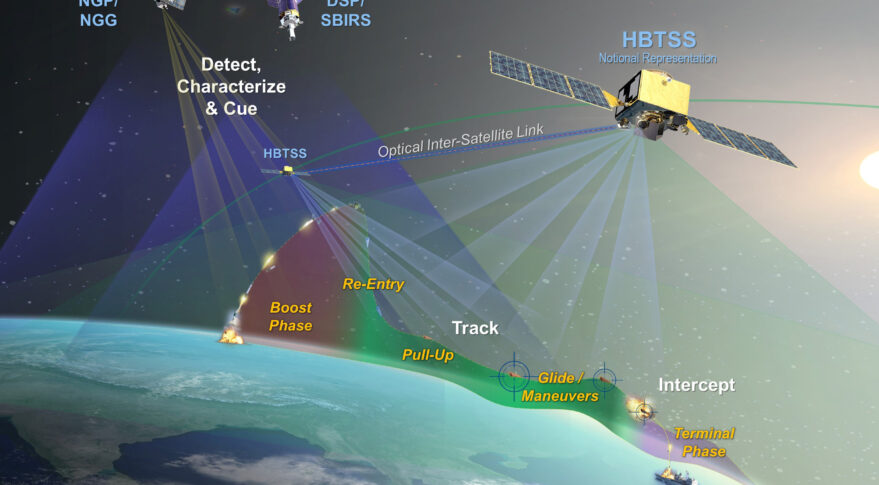
WASHINGTON — The Space Systems Command, the Space Development Agency and the Missile Defense Agency have formed a new program office to coordinate disparate procurements of satellites to detect ballistic and hypersonic missiles.
The Space Systems Command (SSC), the procurement arm of the U.S. Space Force, announced the realignment Sept. 15.
The combined program office “establishes a formal partnership among missile warning, missile tracking and and missile defense acquisition organizations for greater delivery of integrated and resilient sensor-to-shooter capabilities,” said Col. Brian Denaro, SSC space sensing program executive officer, who will lead the new office.
“Our adversaries continue to develop missile technologies that are faster burning, dimmer, and more maneuverable,” Denaro said in a statement.
Representatives from the three agencies will coordinate what is envisioned as a multilayer architecture of missile-defense satellites in geostationary, highly elliptical, medium and low Earth orbits. Each of these layers is developed and procured by different Space Force, SDA and MDA offices.
Deconflicting missile-defense projects has been a congressional priority amid concerns that agencies are developing systems in isolation and not coordinating efforts.
The Missile Defense Agency for decades has been in charge of deploying sensors and interceptors to protect the U.S. and allies from ballistic missiles. The Space Force when it was established in December 2019 took over from the Air Force the development and procurement of geostationary missile-warning satellites.
The Pentagon in its 2019 Missile Defense Review added a new layer of satellites to the mix and decided to invest in a low Earth orbit network of space sensors to track hypersonic missiles fielded by Russia and China, which fly at high speeds and are capable of maneuvering in flight. DoD also created the Space Development Agency in 2019 to field a missile-tracking network using large numbers of smaller, cheaper satellites in lower orbits. SDA next month will be become part of the Space Force.
Meanwhile, the Missile Defense Review gave MDA the leading role in developing defenses against hypersonic weapons. The agency started a low Earth orbit satellite system called Hypersonic and Ballistic Tracking Space Sensor (HBTSS).
Given the fragmented responsibilities for missile defense, Congress has criticized DoD’s effort for lack of coordination and cooperation. The Government Accountability Office in a June 2022 report said MDA “has not adequately coordinated the HBTSS effort with DoD’s Space Development Agency and Space Force.”
Separately, the Space Force is developing another layer of sensor satellites to track hypersonic missiles from medium Earth orbit.
The new combined program office will bring more unity into these efforts, Walter Chai, director for space sensors at MDA, said in a statement, “With the emerging advanced threats, space-based sensors are essential to missile defense. The close collaboration between SDA, SSC, and MDA will ensure that we are able to defeat these threats.”
A spokesman for SDA said the combined office “will enable the coordinated development and fielding of capabilities.”